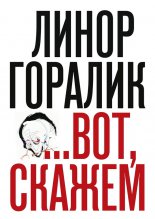Английский язык. Практический курс для решения бизнес-задач Пусенкова Нина

In many successful companies, corporate leaders serve as role models, set the standards for performance, motivate employees, make the company special and are a symbol for the external environment. It was Edwin Land, the founder of Polaroid, who created a favorable organizational environment for R&D and innovation. It was Jim Treybig of Tandem in the Silicon Valley who emphasized that every person is a human being and deserves to be treated accordingly. It was William Proctor of Proctor&Gamble who ran the company with the slogan, «Do what is right». It was Theodore Vail of AT&T who addressed the needs of customers by focusing on service.
In a free-market economy businesses cannot exist without the goodwill of their customers. Yet in certain companies customers are seen as merely interrupting work. Clearly, the long-term success of such a company may be in jeopardy. By contrast, in companies with a strong customer-oriented culture, employees in all departments (not only those that are specially set up to handle customer complaints) listen carefully to the needs of the customers. After all, they are the reasons the company exists. In such companies, measurable customer-satisfaction objectives are set and frequently used for evaluating customer reactions. This may be done through formal surveys or, at times, top managers may contact key customers personally. When Ross Perot, the Texas billionaire who sold his computer company to General Motors, was on the GM board, he answered all customer complaints about cars, rather than sending form letters.
Focus on quality is one of the most important aspects of corporate culture. Too often we hear that what really counts is the bottom line. Of course, businesses can only exist in the long run by generating profit. Unfortunately, profit orientation too often means profit in the short run with little consideration for the long-term health of the enterprise. In the past some U.S. automakers neglected quality because it appeared cheaper to pay for warranty claims than to build quality into the products. The loss of future sales was often not recognized as a cost. In contrast, many Japanese car manufacturers have made quality the basis for long-term profit.
People respond to those things for which they get rewarded. Few rewards are usually given for quality. In a typical company, CEOs get rewarded for profit improvement – seldom for superior products and services. But quality pays in the long run as Japanese car, camera and electronics manufacturers have shown. In Japan, responsibility for quality and productivity is placed at the top. This, in turn, creates a culture that says: Our organization is fanatical about both productivity and quality.
Managers in effective organizations are characterized by action. This can only be done by top management’s commitment to breaking down rigid organization structures. It may begin with some symbolic actions such as eliminating reserved parking spaces for top-echelon managers. After all, is it not equally important that the first-line supervisor be on time to start the assembly line rather than circling the parking lot to find a space to park? Companies with a strong people-oriented culture believe that the dignity of all people is paramount. Whether a manager or a worker, all contribute toward a common goal; all have basic needs for being appreciated as persons; all have the desire to feel competent in carrying out their task, whatever it is.
While a clear mission statement and goals have the potential to motivate organizational members to excellence, the means to achieve these ends must never be compromised. Actions and behavior must be guided by adherence to company policy, must never violate any laws, and above all, must not be unethical. In ethical companies, integrity is the norm, not the exception. Ethics may be institutionalized through 1) company policy or a code of ethics, 2) a formally appointed ethics committee, and 3) the teaching of ethics in management development programs.
Thus, the intangible factor of the corporate culture can make a substantial contribution to strengthening the competitive position of a company, and improving the tangible indicator of profit that it is able to generate.
Source: Industrial Management, September-October 1989, pp. 28—32.
Essential Vocabulary
1. сorporate culture – корпоративная культура
2. focus n – фокус, сосредоточие, акцент
focus v – фокусироваться, сосредотачиваться, концентрироваться
3. stakeholder n – заинтересованное лицо
4. customer n – клиент
5. supplier n – поставщик
supply n, часто в plural – предложение; запас, припас; снабжение, поставка
supply v – поставлять, снабжать, доставлять, давать
6. competitor n – конкурент
competition n – конкуренция
competitiveness n – конкурентоспособность
compete v – конкурировать
competitive a – конкурентоспособный
7. fair play – честная игра, игра по правилам
8. effectiveness n – эффективность (общая)
effective a – эффективный
9. efficiency n – эффективность (удельная)
efficient a – эффективный
10. communication n – коммуникации, передача, сообщение, связь
communicate v – сообщать, передавать; общаться; доносить
11. value n – ценность, оценка (компании)
value n – ценить, оценивать
12. slogan n – лозунг, призыв, девиз
13. price/quality ratio – соотношение цена/качество
14. innovation n – инновация, нововведение, новаторство
innovator n – новатор, рационализатор
innovate v – вводить новшества, делать нововведения
innovative a – новаторский
15. contribution (to) n – вклад
contribute (to) v – вносить вклад
16. executive n – руководитель
executive n – исполнительный
17. founder n – основатель
found v – основывать
18. research and development (R&D) – исследования и разработки
19. goodwill n – добрая воля, деловая репутация; «гудвилл» (статья баланса)
20. complaint n – жалоба, иск; недовольство
complain v – жаловаться; подавать жалобу, иск
21. survey n – обозрение, осмотр, обзор, инспектирование
survey v – проводить осмотр, обзор, обозрение; инспектировать
22. bottom line – итоговая строка баланса или счета, финальная прибыль или убыток, окончательный результат, конечная цель
23. generate profit – генерировать прибыль
24. warranty n – гарантия (качества); поручительство, ручательство; условие
25. sales n. pl . – зд. стоимость продаж товаров компании за определенный период
26. cost n – затраты, издержки, расходы; цена, стоимость, себестоимость
27. Chief Executive Officer (CEO) – главный исполнительный директор
28. commitment n – обязательство; приверженность, преданность; совершение
commit (to) v – брать обязательства, совершать, поручать, вверять; подвергать
committed (to) a – преданный, приверженный
29. supervisor n – инспектор
supervision n – надзор, наблюдение, инспекция
supervise v – надзирать, наблюдать, инспектировать
30. assembly line – сборочная линия, конвейер
31. mission statement – декларация миссии компании
32. integrity n – целостность, полнота; порядочность
33. code n – код, кодекс, сборник правил
34. (in)tangible a – (не)материальный, (не)осязаемый
Exercise 1. Answer the following questions.
1. Does corporate culture influence the way organizations are managed? 2. Do efficiency and effectiveness of a company depend on corporate culture? 3. Does corporate culture affect the relations of a company with its stakeholders? 4. How would you define corporate culture? 5. Do slogans really give us a general idea of what the company stands for? 6. Who should create the internal environment in an organization? 7. What are the basic values of successful companies? 8. Is bottom line the only thing that really matters? 9. Are employees always rewarded for quality? 10. Why is it important for companies not to violate any laws and be ethical?
Exercise 2. The dictionary «Economics» gives the following definitions of the terms «effectiveness» and «efficiency»: «Effectiveness is the achievement of objectives. Efficiency is the achievement of the ends with the least amount of resources.» Make 4—6 sentences of your own using these words in order to emphasize the difference between them.
Examples: Sibneft was one of the most efficient oil companies in Russia demonstrating a rapid low-cost oil production growth.
Aeroflot has introduced an effective frequent flyer program.
Exercise 3*. According to the generally accepted definition, «Stakeholders are the people or institutions that are affected, or might be affected, by an organization’s activities. Likewise, stakeholders can, in return, affect the activities of that organization.»
The text identifies such stakeholders as customers, suppliers, creditors and competitors. What other stakeholders can you name?
Exercise 4. «Commitment» means «обязательство» and «приверженность, преданность чему-либо». Make 4—6 sentences of your own using the word «commitment» to emphasize its different meanings.
Examples: Gazprom has always met its gas export commitments to Western Europe.
Bosco di Ciliegi is known for its unwavering commitment to customer satisfaction.
Exercise 5. Study the Hofstede Cultural Orientation Model (1995) that classifies cultures based on where they fall on five continuums, and identify the culture of your company according to these categories:
1.Individual vs. Collective Orientation
The level at which behavior is appropriately regulated.
2.Power-Distance Orientation
The extent to which less powerful parties accept the existing distribution of power and the degree to which adherence to formal channels is maintained.
3.Uncertainty-Avoidance Orientation
The degree to which employees are threatened by uncertainty, and the relative importance to employees of rules, long-term employment and steady progression through well defined career ladders.
4.Dominant-Values Orientation
The nature of the dominant values – e.g., monetary focus, well-defined gender roles, formal structure – vs. concern for others, focus on quality of relationships and job satisfaction, and flexibility.
5.Short-Term vs. Long-Term Orientation
The time frame used: short-term (involving more inclination toward consumption) vs. long-term (involving preserving status-based relationships).
Exercise 6*. Fill in the blanks using terms given below.
Gore’s Corporate Culture.
How we work sets us apart. We encourage hands-on…………, involving those closest to a project in………… Teams organize around……… and leaders emerge.
Our……., Bill Gore created a flat lattice organization. There are no………. nor pre-determined…………. Instead, we communicate directly with each other and are………….. to follow members of our……………
How does all this happen?……… (not employees) are hired for general work areas. With the guidance of their………… (not bosses) and a growing understanding of opportunities and team…………., associates commit to projects that match their………. All of this takes place in an……….. that combines freedom with cooperation and autonomy with synergy.
Everyone can quickly earn the……….. to define and……..projects. Sponsors help associates chart a course in the organization that will offer personal fulfillment while maximizing their………. to the enterprise. Leaders may be………., but are defined by ‘follower ship’. More often, leaders……… naturally by demonstrating special knowledge, skill, or experience that advances a business objective.
Associates………. to four basic guiding principles articulated by Bill Gore:
……… to each other and everyone with whom we come in contact
Freedom to encourage, help, and allow other associates to grow in knowledge, skill, and………..
The ability to make one’s own………. and keep them
Consultation with other associates before undertaking actions that could impact the…….. of the company.
Source: www.gore.com
Terms:
commitments, sponsors, channels of communication, drive, credibility, decision making, environment, skills, i, appointed, opportunities, adhere, multi-disciplined teams, associates, objectives, contribution, fairness, scope of responsibility, founder, emerge, innovation, accountable, chains of command
Exercise 7. Translate into English.
Корпоративная культура ВМЗ.
Выксунский металлургический завод – динамично растущая, высокоэффективная, социально ориентированная компания, стремящаяся стать ведущей компанией в мире по производству труб и железнодорожных колес.
Наша продукция – это результат постоянных инноваций и приверженности качеству. Она соответствует самым высоким требованиям наших потребителей – ведущих энергетических, транспортных и промышленных компаний. Используя нашу продукцию, они могут качественно, с минимальными издержками, экологически чисто и безопасно транспортировать людей и материалы на любые расстояния. Без нашей продукции невозможно создание и эксплуатация глобальных и локальных энергетических и транспортных коммуникаций.
ВМЗ – финансово устойчивая компания, ориентируется на постоянную работу по повышению эффективности операционной деятельности и инвестиций. Стабильность позволяет ВМЗ строить отношения со своими клиентами и поставщиками на долгосрочной основе.
Мы развиваем и поощряем профессионализм и инициативу наших сотрудников и строим наш бизнес на передовых методах управления.
Наши ценности:
Интересы клиентов – наш приоритет
Опережать время – наше кредо
Высококачественная продукция – наш принцип
Надежные партнеры – наша опора
Повышение уровня жизни работников – наше правило
Содействие развитию регионов – наша позиция
Сплоченная команда профессионалов – наш капитал
Источник: www.vmz.ru
Lesson 3
Program Management
Read and translate the text and learn terms from the Essential Vocabulary.
How Ford Hit the Bull’s-eye with Taurus
A team approach borrowed from Japan has produced the hottest US car in years
It’s been a long time since a car built in Detroit has drawn such rave reviews. But there’s no doubt about it: Ford Motor Co.’s new Taurus and its sister, the Mercury Sable, are four-star successes. Customers are snapping them up faster than the company can turn them out. The two cars are Ford’s hottest sellers since Lee Iacocca’s Mustang took the auto world by storm in the mid-1960s.
For Detroit, Ford’s success may herald a turning point. It’s true that Detroit still suffers from a perception of poor quality and a sense that it’s out of step with the customer. That’s why the Big Three continue to lose market share to imports from Japan and Europe. But Taurus and Sable demonstrate that the former American competitive edge is not completely lost. U.S. carmakers can still build a machine that excites the average American driver.
How did Ford pull it off? Largely, by stealing a page from the Japanese. It studied customer wants and needs like never before, made quality the top priority, and streamlined its operations and organisation. Top management is so pleased with the result that the Taurus approach will be incorporated in all future development programs.
Radical Steps. The Taurus-Sable project was conceived in the bleak days of 1980, when Detroit was deep in recession. Ford’s executives finally realized that fuel economy was not the only reason consumers were choosing imports. «It was painfully obvious that we weren’t competitive with the rest of the world in quality,» says John Manoogian, who then was Ford’s chief of quality. «It became our number 1 priority.» Adds Lewis Veraldi, who headed the Taurus-Sable program: «We decided we had better do something far-reaching – or go out of business.»
Taurus and Sable were a huge gamble, indeed. When the automaker realised it needed to take radical steps to lure drivers back into the American fold, it decided that its new cars would replace the company’s best-selling models, Ford LTD and Mercury Marquis. To make sure Taurus and Sable would succeed, Ford invested $3 billion – an unprecedented amount for a new-car project.
The first step was to throw out Ford’s traditional organisational structures and create Veraldi’s group, christened Team Taurus. Normally, the five-year process of creating a new automobile is sequential. Product planners come up with a general concept. Next, a design team gives it form. Their work is handed over to engineering, which develops the specifications that are passed on to manufacturing and suppliers. Each unit works in isolation, there is little communication, and no one has overall project responsibility.
Turning the Tables. Team Taurus took a «program management» approach. Representatives from all the various units – planning, design, engineering, and manufacturing – worked together as a group. Top management delegated final responsibility for the vehicle to Team Taurus. Because all the usually disjointed groups were intimately involved from the start, problems were resolved early on, before they caused a crisis.
Ford methodically set out to identify the world’s best-designed and engineered automotive features, so that as many as possible could be incorporated in Taurus-Sable. Ford engineers turned the tables on the Japanese and did some «reverse engineering» of their own – to learn how the parts were assembled as well as how they were designed.
The company bought a Honda Accord and a Toyota Corolla and «tore them down layer by layer, looking for things we could copy or make better,» Veraldi says. All told, engineers combed over 50 comparable midsize cars. They found that the Audi 5000 had the best accelerator-pedal feel. The award for the best tire and jack storage went to the BMW 528e. Of the 400 such «best in class» features, Ford claims that 80% are met or exceeded in Taurus-Sable.
At the same time, to determine the customers’ preferences, Ford launched its largest series of market studies ever. That led to features such as a net in the trunk that holds grocery bags upright and oil dipsticks painted a bright yellow for fast identification. «Little things like that mean a lot to people,» notes Veraldi.
Worker Input. Meanwhile, a five-member «ergonomics group» spent two years scientifically studying ways to make the cars comfortable and easy to operate. They took seats from 12 different cars, stuck them into a Crown Victoria and conducted driving tests with a big sample of male and female drivers in all age groups who were then quizzed on what they liked and did not like. The best elements were combined to create the Taurus-Sable seats. Similarly, dashboard instruments and controls were tested to determine ease of use. People were timed pushing buttons, flipping switches, and pulling levers. It turned out that the quickest and most comfortable way to turn on the headlights was to turn a large round dial mounted on the left side of the steering column. That’s how you do it in the new Fords.
Ford also made some distinctly un-Detroit changes in production. It asked assembly-line workers for their advice even before the car was designed, and many of the suggestions that flooded in were used. For example, workers complained that they had trouble installing car doors because the body panels were formed in too many different pieces – up to eight to a side. So designers reduced the number of panels to just two. One employee suggested that all bolts have the same-size head. That way, workers wouldn’t have to grapple with different wrenches. The change was made. «In the past we hired people for their arms and their legs,» says Manoogian. «But we weren’t smart enough to make use of their brains.»
The Team Approach to Product Development
Bulging Backlog. Ford pulled suppliers into the effort too. Typically, an automaker turns to its suppliers almost as an afterthought. Only when a car’s design has been completed does the manufacturer send out specifications for parts and solicit bids in search of the lowest cost. The companies that are chosen keep the business only until a lower price comes along. Team Taurus, on the other hand, signed long-term contracts with contractors and invited them to participate in product planning. «We never had the supplier input we had on this car,» says Veraldi. «Now we’ll never do it any other way.»
Taurus and Sable have not been completely free of problems. There have already been recalls to correct troubles with the side windows in station wagons and with the clutch in some four-cylinder models. As for overall reliability, it will be a year or two before an accurate track record on repairs emerges.
Still, Ford’s bet on Taurus-Sable is paying off – handsomely. With bare-bones models starting at $10,200, more than 130,000 of the midsize sedans and station wagons have been delivered so far, and Ford has a backlog of orders for 100,000 more. Elated dealers say that customers – some of whom haven’t set foot in a domestic producer’s showroom for years – are content to wait patiently for two months or more to drive away with a Taurus or Sable.
In fact, transplanting many Japanese principles worked so well for Team Taurus that Ford decided to apply management-by-teamwork across the board. It promoted Veraldi to vice-president for car-programs management and gave him the job of spreading the message throughout the company. Ford, it seems, isn’t too haughty to say arigato gozaimasu – thank you very much.
Source: Business Week, June 30, 1986, p. 69—70.
Essential Vocabulary
1. perception n – восприятие
perceive v – воспринимать
perceived a – воспринимаемый
2. competitive edge – конкурентное преимущество
3. carmaker (automaker) n – автомобилестроитель
4. streamline v – рационализировать, оптимизировать
5. recession n – рецессия, снижение уровня деловой активности
6. consumer n – потребитель
consumption n – потребление
consume v – потреблять
7. fuel n – топливо
8. investment n – инвестиция, капиталовложение
investor n – инвестор
invest v – инвестировать
9. manufacturer n – производитель, изготовитель, промышленник
manufacture v – производить, изготавливать, выпускать; перерабатывать (сырье)
manufacturing a – промышленный, производственный
10. engineer n – инженер, конструктор
engineering n – инжиниринг
engineer v – проектировать; создавать, сооружать
engineering a – прикладной, технический, инженерный
11. unit n – часть, доля, единица; подразделение компании; набор
12. program management – программное управление
13. delegate responsibility – делегировать ответственность
14. vehicle n – перевозочное средство; средство выражения и распространения; проводник
15. customers’ preferences – предпочтения клиентов
16. launch n – запуск (продукции, проекта)
launch v – запускать
17. sample n – образец (товара), выборка, проба (напр. грунта)
sample v – пробовать, испытывать, отбирать образцы или пробы
18. age group – возрастная группа
19. advice n – совет, консультация; авизо, мнение
advisor n – советник, консультант
advise v – консультировать
advisory a – совещательный, консультативный
20. backlog n – задолженность, просроченная работа; портфель заказов
21. solicitor n – адвокат, поверенный
solicit v – ходатайствовать, просить; навязывать (товар, услуги)
22. bid n – предложение
bidder n – покупатель; лицо, предлагающее цену; участник торгов
bid v – предлагать (цену), участвовать в торгах
23. contractor n – подрядчик
24. recall n – призыв ранее уволенных работников вернуться на работу; отзыв товара (по качеству)
recall v – призывать, отзывать
25.track record – послужной список; предыстория, прошлые результаты
26. delivery n– поставка
deliverables n – результаты (осязаемые)
deliver v – поставлять
27. domestic a – внутренний; национальный
28. showroom n – салон, демонстрационный зал
29. across-the-board – повсеместный, тотальный, включающий все категории и классы
Exercise 1. Answer the following questions.
1. Why were the Big Three losing market share to imports from Japan and Europe? 2. What was the situation in Detroit when the Taurus project was launched? 3. What was the traditional approach of the American carmakers to creating a new automobile? 4. What are the key characteristics of the «program management» approach? 5. How did Ford identify the world’s best-designed and engineered automotive features? 6. What were the results of the market studies conducted by Ford? 7. What was the input of the «ergonomics group»? 8. How were workers involved in the design process? 9. What was the role of suppliers? 10. Did Ford successfully transplant the Japanese management principles?
Exercise 2*. Which of the following statements are not correct and why?
1. Taurus and Sable manufactured by Ford were huge successes. 2. Detroit suffered from a perception of poor quality and that’s why the Big Three were losing market share to imports from Japan and Europe. 3. Ford executives understood that fuel economy was the reason why consumers were choosing imports. 4. To make sure Taurus and Sable would succeed, Ford invested $3 billion, which was the usual amount of money needed to develop a new car. 5. Normally, the five-year process of creating a new automobile is sequential. 6. With the sequential approach, different units work in close cooperation and are in constant communication with each other. 7. The final responsibility for the vehicle was delegated to Team Taurus. 8. To determine the customers’ preferences, Ford launched its largest series of market studies ever. 9. Detroit carmakers always asked assembly-line workers for their advice. 10. The American automakers usually involved their suppliers in the design process. 11. The Japanese principles were successfully applied in the Taurus project.
Exercise 3. Make 2—4 sentences using the term «track record».
Example: Aeroflot has a good track record in terms of flight safety, but this fact is not well known to its customers.
Oleg Deripaska, head of RUSAL, has an impressive track record of arranging successful mergers and acquisitions that turned his company into the world’s biggest aluminum producer.
Exercise 4. In economic context, «domestic» means «национальный, внутренний». Make 2 sentences with each of the following expressions:
domestic market






